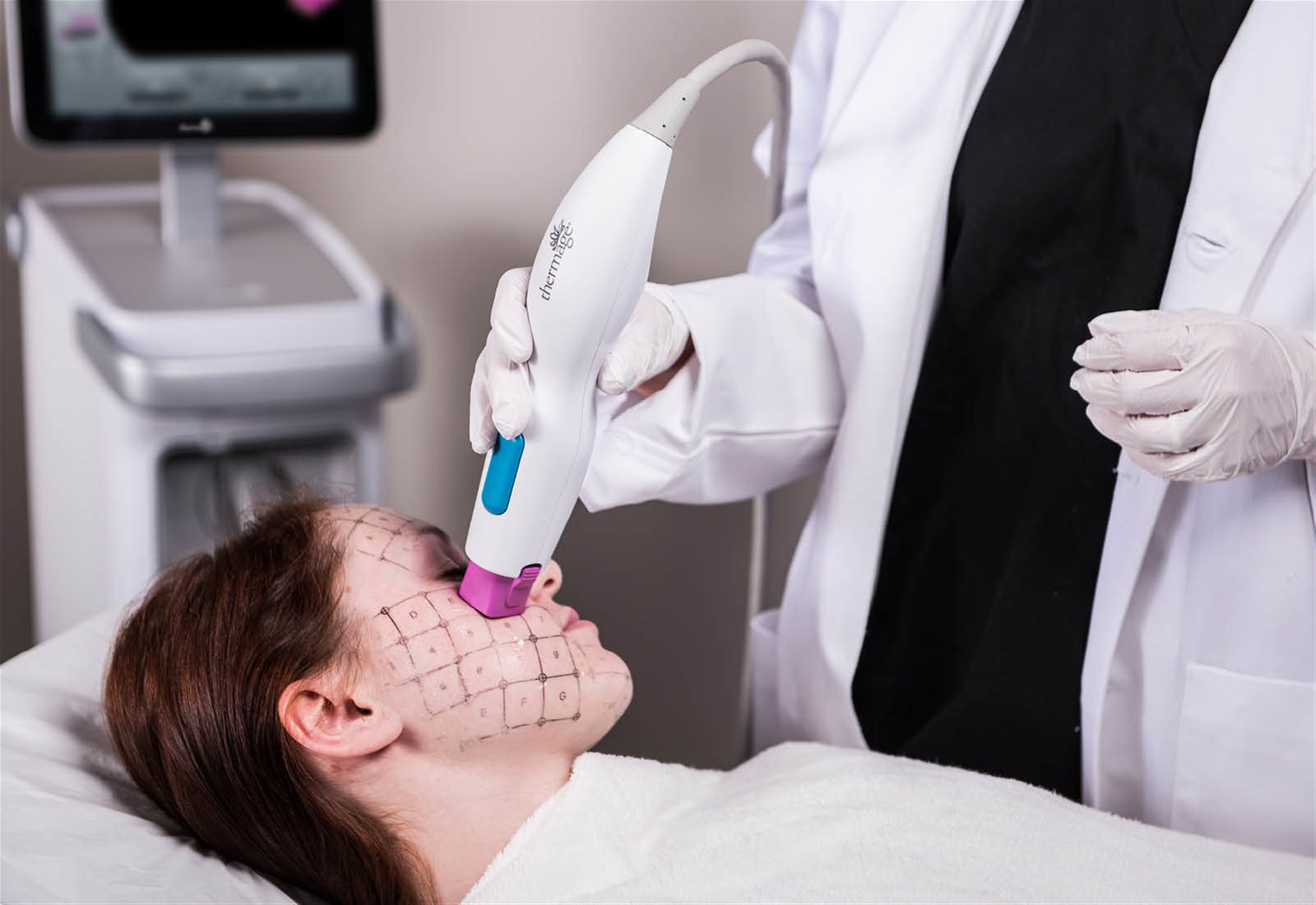The use of radiofrequency (RF) technology in surgical applications is not a new concept. However, the past decade has seen an influx of new RF systems into the medical aesthetics industry. In this article, we explore why Thermage® is still considered a class leader.
Over the last 20 years, Thermage® has undergone continual development and improvements, resulting in a well-studied and reported system. Studies have shown that it is a safe procedure with little to no downtime.1 With over 3.3 million* patients treated, this provides a strong indication of its safety and efficacy.1 Josh Sim, an expert in the field, states that “Thermage FLX®’s efficacy and safety profile has influenced my decision in taking the system on board”.
Thermage FLX® has numerous unique features that achieve patient comfort. After each 200ms pulse of cooling, cryogen gas is applied onto the epidermis, cooling the superficial layers whilst creating optimum thermal trauma in the deeper dermis.3 Almost all patients report a minimal amount of discomfort.2 “As Thermage® creates no puncture wound and with our unique transdermal revitalisation protocol, the downtime is almost zero,” adds Sim.
Furthermore, FLX® features an optimised energy delivery with its patented AccuREP™ Technology which allows for automatic calibration.3 The System is designed to auto-tune to match the impedance of the dermis at each REP, and then therapeutic RF energy will be delivered for each treatment REP.4
Dr Rita Rakus comments: “We love how all the technology in Thermage eliminates therapist variability as it delivers such consistent results.”
The lower face is a key area, but Thermage® has more versatility as it can treat anywhere on the body, including the eyelid, which is approved to reduce hooding.8 Most other systems can treat peri-orbitally for a brow lift, but, with Thermage®, you can treat the eyelid.5 Upper eyelid tightening was demonstrated in 88% of patients.6 Dr Rakus adds: “The ability to treat the actual eyelid delivers the closest you will get to a non-surgical blepharoplasty.”
The key objective of clinics is good consistent aesthetic outcomes. Thermage® first induces an immediate structural change in fibrils of existing dermal collagen9, and later triggers a wound healing process that culminates in new collagen production and can result in several months of gradual improvement in the appearance of the skin after treatment. 92% of patients have a measurable improvement.7 All this is achieved in one session, which produces lasting results.5 As it is a single treatment5, it saves time and allows for higher footfall and client turnover. Sim concludes that “Thermage®’s single session protocol produces lasting results, which meets my clients’ expectations.”

REFERENCES
1. E. Finzi, A. Spangler. Multipass vector (mpave) technique with nonablative radiofrequency to treat facial and neck laxity. Dermatol Surg. 2005 Aug;31(8 Pt 1):916-22
2. Report of Gazelle Clinical Study 09-100-GA-T ‘Validation of the Thermage 3.0 cm2 STC and DC Frame Tips, Comfort Software and Vibration Handpiece on the Face and Thighs’ (#09-019ER). Bothell
3. Walter, W.,2017 Solta Medical Support for Thermage FLX® product feature claims. Bothell
4. S. Jeffrey, et al. Results of a survey of 5,700 patient monopolar radiofrequency facial skin tightening treatments: Assessment of a low-energy multi-pass technique leading to a clinical end point algorithm. Dermatol Surg 2007; 33:900-907
5. R. Fitzpatrick et al. Multicenter study of noninvasive radiofrequency for periorbital tissue tightening. Lasers Surg Med. 2003;33(4):232-42
6. Biesman BS, Baker SS, Carruthers J, Silva HL, Holloman EL. Monopolar radiofrequency treatment of human eyelids: a prospective, multicenter, efficacy trial. Lasers Surg Med. 2006 Dec;38(10):890-8
7. J.S Dover, et al. Results of a survey of 5,700 patient monopolar radiofrequency facial skin tightening treatments: Assessment of a low-energy multi-pass technique leading to a clinical end point algorithm. Dermatol Surg 2007; Aug;33(8):900-7
8. Thermage user manual
9. Bogle MA, Ubelhoer N, Weiss RA, Mayoral F, Kaminer MS. Evaluation of the multiple pass, low fluence algorithm for radiofrequency tightening of the lower face. Lasers Surg Med. 2007 Mar;39(3):210-7